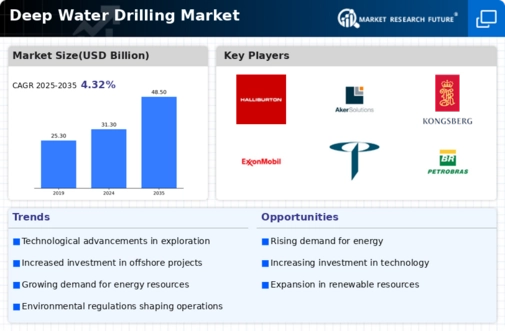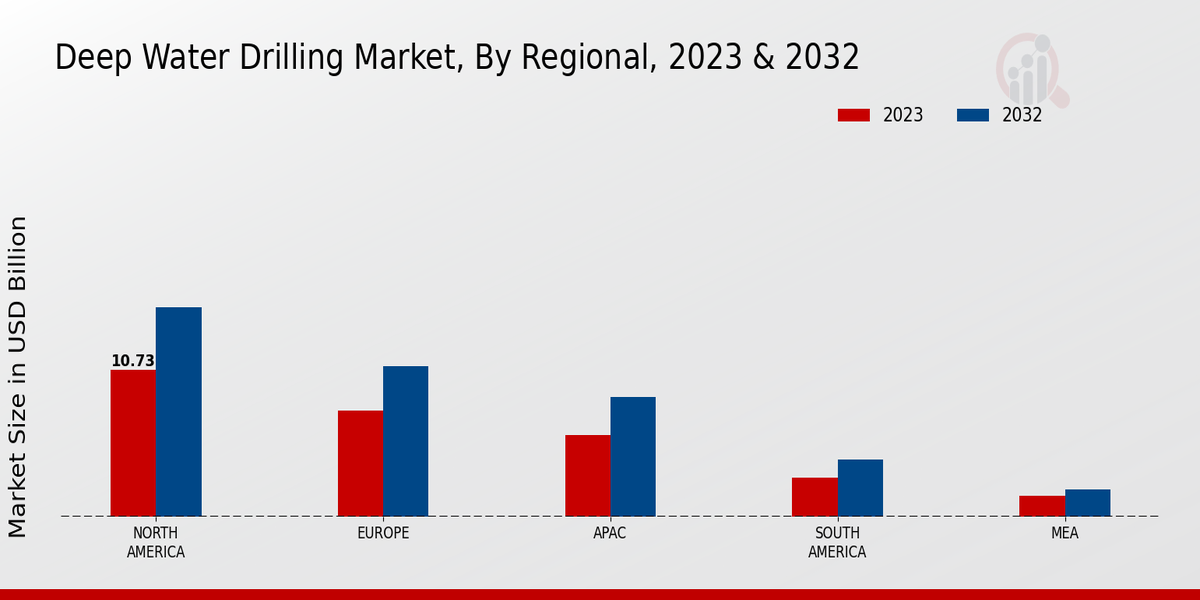Geopolitical Factors
Geopolitical dynamics significantly impact the Global Deep Water Drilling Market Industry, as countries vie for control over valuable offshore resources. Tensions in oil-rich regions can lead to fluctuations in supply and demand, influencing investment decisions in deep water drilling projects. For instance, political stability in key regions can enhance investor confidence, while instability may deter investments. Furthermore, international collaborations and agreements can facilitate access to deep water reserves, promoting market growth. As geopolitical landscapes evolve, the industry must navigate these challenges to ensure continued development and exploration of offshore resources.
Rising Energy Demand
The Global Deep Water Drilling Market Industry is experiencing a surge in demand for energy, driven by population growth and industrialization. As countries strive to meet their energy needs, deep water drilling emerges as a viable solution to access untapped oil and gas reserves. In 2024, the market is projected to reach 31.3 USD Billion, reflecting the increasing reliance on offshore resources. This trend is likely to continue as energy consumption rises, particularly in emerging economies. The need for sustainable energy sources further propels investments in deep water drilling technologies, indicating a robust growth trajectory for the industry.
Environmental Regulations
The Global Deep Water Drilling Market Industry is increasingly influenced by stringent environmental regulations aimed at minimizing ecological impacts. Governments worldwide are implementing policies that require companies to adopt sustainable practices in offshore drilling operations. Compliance with these regulations often necessitates investment in advanced technologies and practices that reduce environmental risks. While this may increase operational costs in the short term, it also drives innovation and efficiency in the long run. As the industry adapts to these regulatory frameworks, it is likely to foster a more sustainable approach to deep water drilling, ultimately benefiting both the environment and market growth.
Technological Advancements
Technological innovations play a pivotal role in shaping the Global Deep Water Drilling Market Industry. Advancements in drilling techniques, such as subsea systems and automated drilling rigs, enhance operational efficiency and safety. These technologies enable companies to explore deeper and more challenging environments, thereby increasing the feasibility of deep water projects. The integration of digital technologies, including data analytics and remote monitoring, further optimizes drilling operations. As a result, the industry is likely to witness a compound annual growth rate of 4.06% from 2025 to 2035, reflecting the positive impact of these advancements on market dynamics.
Market Trends and Projections
Market Expansion in Emerging Economies
Emerging economies are becoming increasingly important players in the Global Deep Water Drilling Market Industry. Countries such as Brazil, Angola, and India are investing heavily in offshore exploration and production to meet their growing energy needs. This expansion is driven by the desire to reduce dependence on imported energy and to harness domestic resources. As these markets develop, they present new opportunities for deep water drilling companies to establish operations and partnerships. The projected growth of the market to 48.5 USD Billion by 2035 underscores the potential of these emerging economies to contribute significantly to the overall industry landscape.
























